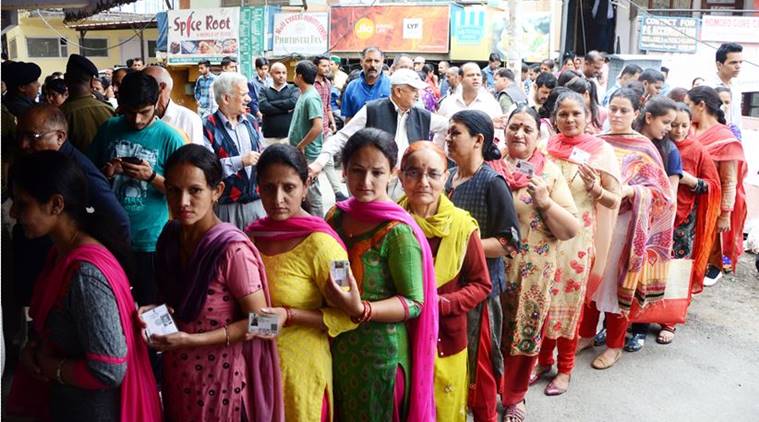
A child miseducated is a child lost – John F Kennedy
While all the mainstream parties are busy issuing statements of promises to various sections of society, there is little concern for the children who are at present outside the electoral process. These ‘ non- voters’ are being neglected and the potential of ‘ future’ voters is not being discussed either by the politicians or people adequately.
Plight of Children
According to data collated by National Health Survey 2005- 06 , the all india average for malnourished children is 47%. Every second child under 5 years of age is malnourished.( Status of children in India, Some findings of NFHS -3, azadindia.org). Literacy rates among SCs and ST girls is 42% and 35% respectively lower than Muslims literacy rate of 50%. In general too only 30 of 100 girls complete primary education. Even quality of education is pathetic. Report by ASER states that half the children who are in schools are nowhere near their class- age appropriate learning levels. (Status of Primary Education in India: Strides and Challenges, July 17, 2013, by Vijay Kulkarni, educationinnovations.org). There is a lack of quality education in the country.
According to ASER 2012 report, 96.5% of rural children between 6-14 were enrolled in schools. Another report of 2013 stated that 229 million children were enrolled in rural and urban accredited schools. (Education in India,en.m.wikipedia.org). Though nearly 96 percent children enter primary schools, just 40% attend secondary schools( grade9-12) . Thus, many drop out.
Major hurdles
Most children do not get standard education and eventhough they pass out, their learning and knowledge capacity remains low. Many high school students find difficulty reading primary text books, basic mathematics and general awareness. This is due to lack of trained teachers, low awareness among rural parents, improper curriculum and promoting methods and lack of infrastructure facilities for teaching. Many schools in rural areas run with a single teacher and many classes are clubbed together for want of space. Poverty and helplessness drives children to drop out and work as child labourers.
Manifesto for children
Since the state of child education is pathetic, educators, activists and people in general should demand political parties to include in their manifesto, measures for imparting the children standard education and adherence to compulsory education as prescribed in the constitution. The allocation for education should be steeply increased. Huge vacancies of teachers should be filled up urgently. The parents who are voters must exert pressure on the parties to spell out precise steps in giving top priority to primary and secondary education.
So far, there has been little talk of reforming education system. The present ruling party has not only taken backward step in the field of education by cutting allocations, but also tried change the syllabus and mould it in its own ideological way. Child education has not progressed in the last four years. Unless the importance of primary education is not realized, the standard of students may not match international standards.
This is the time to press for a comprehensive new education policy and commitment from the politicians to seriously address the core issue of education in an objective way for a better future.
According to NFHS 4 (2015-16), the fourth in the series, information is available on population, health and nutrition and for the first time, district level data is provided on many indicators. 19.8 million children below the age of six are undernourished (ICDS 2015). ..58% of children 6 months to five years were found to be anemic in the country.(NFHS 4 (2015-16). Total immunization stood at 62%. India is home to 30% of almost 385 million living in extreme poverty , the largest in South Asia.acording to a world Bank group and unicef report — Ending Extreme Poverty: A Focus on Children (October 5 2016). Government has released statistical details — Children in India 2018: A Statistical Appraisal (147 pages). Literacy rate among children (7-14 years) stands at 88.3% according to 2011 census (page iii).
(ASER Report some facts: translated from the article in Telugu – Veekshnam vol.17 No.3 March 2019 (ASER Nivedika – Pradhamika Vidya Vaiphalya Suchika ). ASER Report – Failure of primary education indicator by B. Ramakrishna pages 31-33.
Pratham organisation has released 13 reports from 2005. The latest ASER 2018 was released on aJanuary 15 2019. In this report, 546,527 children from 3 to 16 years were surveyed. The capabilities of these children in schools were assesed.
In the country, 3-14 aged children who went to government schools were 65.5% and private schools 30.9%. about 2.8% were outside school education. All the children from 3 to 8 classes were tested in languages and mathmetics and the results were released in tabular form. In the country, 43.3%of primary schools had less than 60 students. 32.8% dd not have play grounds. 83.5% schools did not have special physical training teachers. In 25.2% schools, there is no drinking water facility.
Detailed analysis of the report reflects glaring insufficiencies in primary school education system. People should press leaders to include basic infrastructure , trained teacher appointments, etc in the political party manifestos
Sheshu Babu is a political commentator
















































